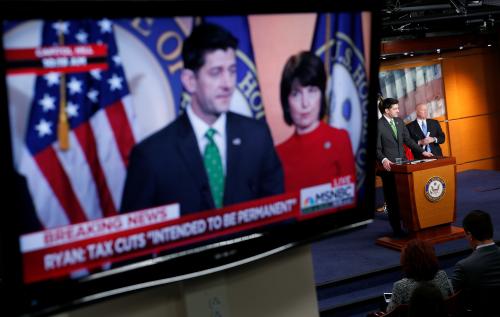This article originally appeared in Real Clear Markets on June 5, 2018.
Newspapers around the nation are featuring stories on the financial condition of the government program that matters more to most Americans than any other–Social Security. The cause is today’s release of the annual report of the Social Security trustees on the balance between the program’s projected revenues and expenditures over the next 75 years.
The most striking aspect of this report is how much it looks like those of the last several years. The reason is simple: the conditions on which the projections are made haven’t changed much since last year—or, for that matter, for the last few years. Even when those conditions do change, the actuaries adjust their assumptions only when trends are well established and, even then, slowly and gradually. They know that projections that jumped around with each new whiff of economic or demographic news would render the projections useless. More important, they understand that seemingly sharp breaks from past trends are often the result of transitory events and are soon reversed.
So, this year’s report says, as it did last year, that Social Security has plenty of money to pay for all scheduled benefits until some time around 2034, plus or minus a few months or a year. By then, rising costs resulting from retirement of baby-boomers will have run down reserves, now more than $2 trillion. Current revenues will then cover about three quarters of the program’s cost. The clear message of this year’s report, like all those of recent years, is that Congress needs to do something before then to restore long-term balance.
Some editorial writers and bloggers will claim to see news in the new report. But, in truth, there isn’t much. But a newsless report is still worth writing about because the political controversy over how best to close the funding gap that everyone acknowledges. Despite certainty about the need for action to close the gap, Congress will not act this year to close it. To do so would require benefit cuts or tax increases, both of which individual members of Congress regard as political poison in an election year—and this is an election year. Of course, every year is either an election year or just before an election year. So prospects are poor that Congress will act on its own until Trust Fund reserves are nearly depleted and projected revenues are insufficient to pay for scheduled benefits.
That is a shame, because when the $2 trillion reserve fund has been depleted the choices about what to do will be much less appealing than they are now. When reserves are depleted, 25 percent cuts in benefits for everyone already on the rolls and new beneficiaries alike can restore balance. Many of those affected would have no other source of income and no possibility of returning to work.
Or Congress could boost payroll taxes for all workers by a third. Many on the political left are sanguine that Congress will sustain benefits because even tax-phobic conservatives will find higher taxes less odious than snatching a quarter of the benefits income from people many of whom have no other source of income and no practical way to replace those losses.
But there is a third possibility, one that should worry progressives interested in sustaining current benefits. Congress could enact large benefit cuts, phased in over many years, and cover the gap until they take full effect by running up government debt. At one time, one might have thought that such a course would frighten conservatives too. No more. President George W. Bush’s Social Security commission proposed to use heavy public borrowing for decades to maintain Social Security benefits while diverting payroll taxes into private accounts. And just last year, conservatives who had styled themselves as tigers of fiscal prudence meekly accepted sharply increased debt to finance tax cuts for businesses and wealthy individuals.
Should conservatives control Congress and the White House when Social Security reserves are depleted, they would likely pursue such a course. This prediction is more than speculation. Sam Johnson, Republican chair of the Ways and Means Subcommittee on Social Security introduced a bill that would cut benefits gradually by enough not only to close the projected funding gap, but also to pay for a cut in the payroll taxes that financed Social Security.
Social Security remains overwhelmingly popular with voters—Democrats, Republicans, and Independents, alike. Polls indicate that a majority of respondents want to sustain benefits. They are even willing to pay higher taxes to do so. A president may be able to mobilize this broad consensus, even if individual members of Congress cannot. A presidential candidate might even find that committing to close Social Security’s projected funding gap gradually and without inflating government borrowing is a good way to win his or her party’s nomination.





Commentary
Op-edNo news on Social Security…and that’s very important
June 5, 2018